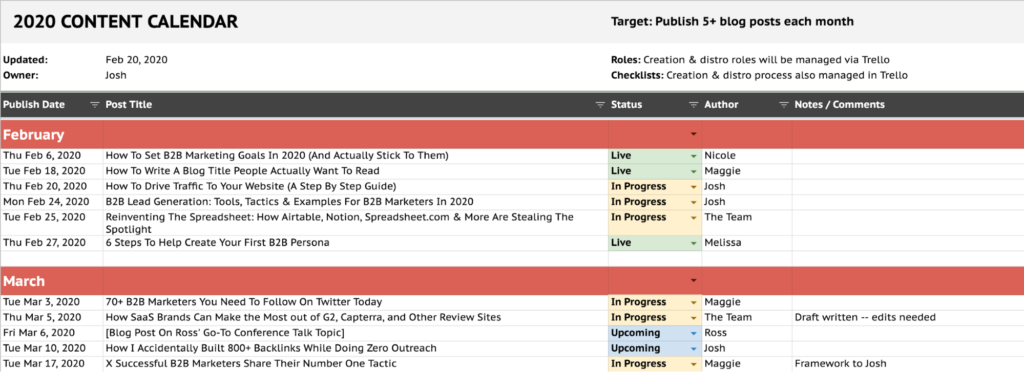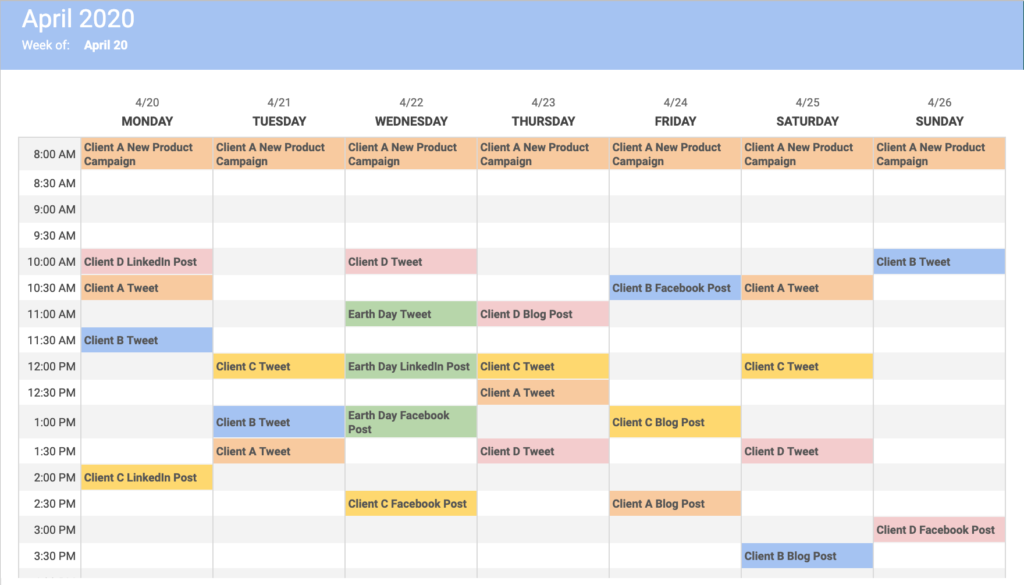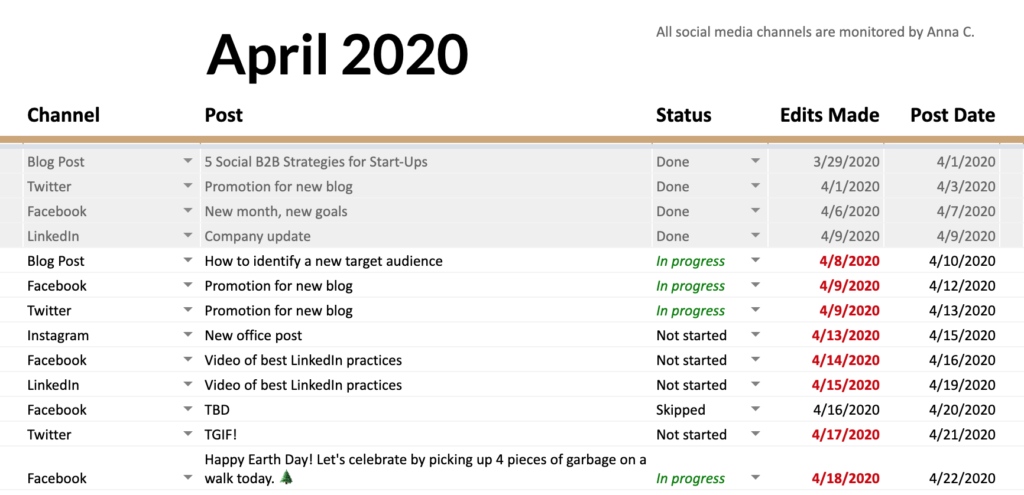Article's Content
What Is a Content Calendar?
A content calendar is a schedule of when and where upcoming content is going to be published. Its main purpose is to visualize content and map out your content distribution strategy.
Your content calendar could include upcoming blog posts, status updates, tweets, prepared promotional activity, and updates to published content.

Content calendars typically live in a spreadsheet, which allows you to make use of helpful features such as dropdowns and checkboxes.
No two content calendars are the same—they can have multiple pages and features, or just a few columns and rows. But no matter how simple or complex, content calendars typically share a few key features.
The most important decision is how it’s going to be organized. For example, most content calendars are organized by time, whether it’s days, weeks or months. (Years would not be useful.)
How To Make A Monthly Content Calendar
Categorizing by month makes it easier to map out your distribution strategy and lets you plan out visual content (especially on Instagram). A monthly content calendar provides a high-level view of your monthly social media posts, and it keeps everyone on the same page and all moving parts in order. Plus, a monthly calendar can be edited before the start of the month. It also allows for quick updates and edits before hitting publish.

Colour-coding by post type or distribution channel (see above) will make it easy to see at a glance what needs to be posted and where. Campaigns and promotions can also be colour-coded—for example, if you’re running a multi-day campaign, highlight those days in a certain colour (as shown below).
Why Are Content Calendars Useful?
Content calendars save marketers a ton of time on producing, promoting and sharing content, allows for strategic planning, and allows for editing before publishing.
1. Time-Saving
Content calendars don’t take much time to create, and they can save time and stress. With an organized calendar, you can plan and schedule all your social media posts ahead of time instead of scrambling to create everything the day of. Of course, you could do it the day of, but if there is an error in the caption, for example, it might not be caught before going live.
2. Strategic Visual Planning
Content calendars also help with digital strategy. A complete content calendar allows you to map out a visual strategy in weekly or monthly blocks.
For us, it helps us see what topics we’re covering to make sure we’re not missing something conspicuous, and to space out similar kinds of content, posts on similar topics, and posts by the same writer.
Planning ahead is especially necessary for highly visual social media platforms, such as Instagram, so that you can see what your feed will look like.
3. Editing Before Publishing
Instead of brainstorming captions and figuring out the best hashtags on the fly, a content calendar allows you to write these ahead of time and then make changes if needed before they go live. They also allow for multiple sets of eyes to look over the scheduled posts and ensure there are no errors.
You can also explore Ai tools to generate content.







